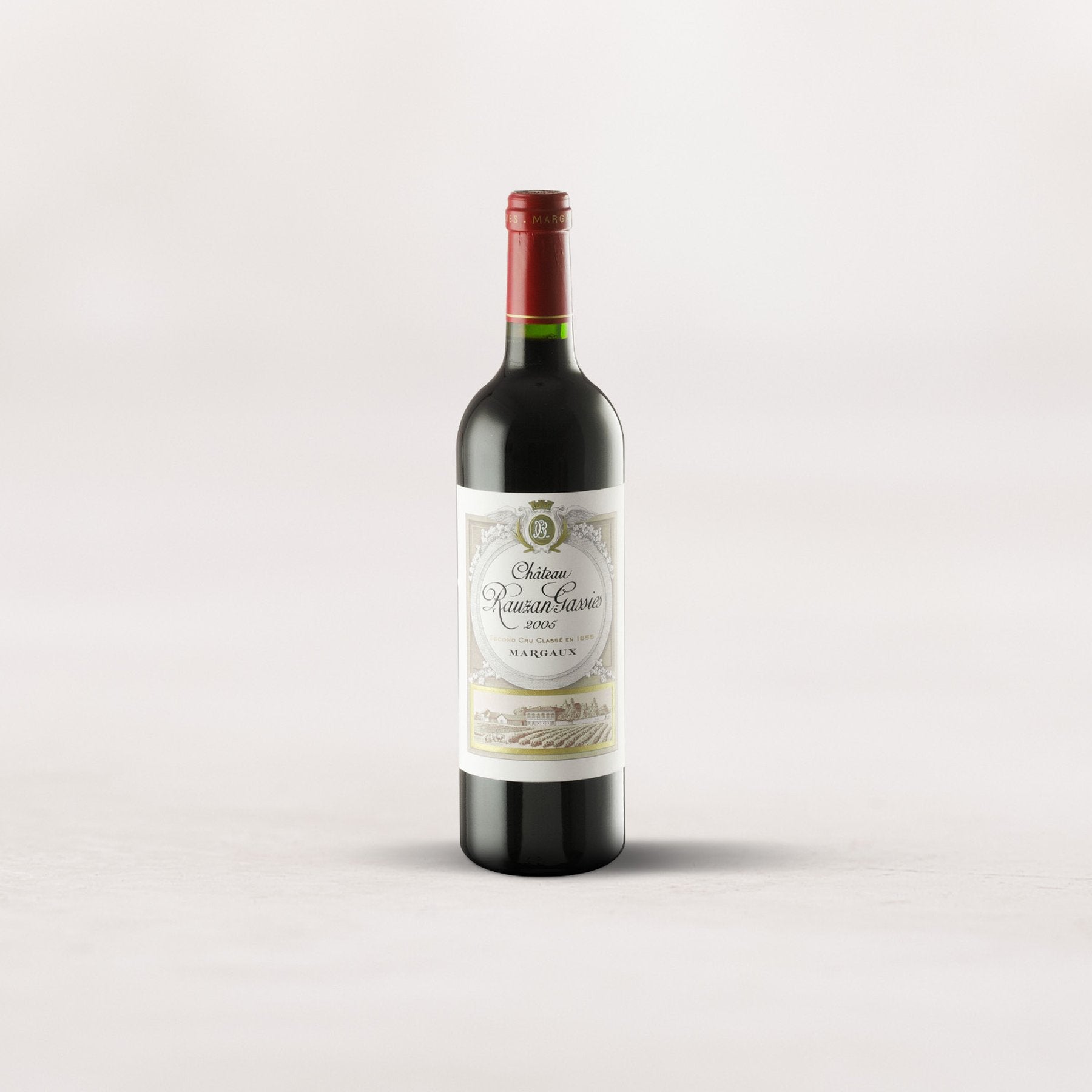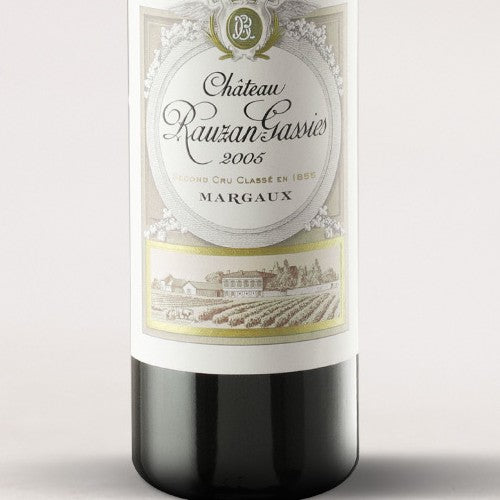Three weeks ago, we offered a 2015 Saint-Julien from Grand Cru Classé Léoville-Poyferré. Now, we’re dialing up the age a full decade and moving into famed Margaux without forfeiting legendary vintage, Second Growth status, or advantageous pricing.
It may be hard to comprehend given Rauzan-Gassies’ long-standing reign as a Deuxième Cru, but their 2005 Grand Vin remains a veritable steal in the midst of expensive, star-studded châteaux. Just check out their neighbors: Rauzan-Segla is a literal stone’s throw away, and the vines of Margaux, Brane-Cantenac, Palmer, and Lascombes surround it. Our tiny back-vintage parcel has just arrived after 15+ years of stock-still cellar aging, and, lest I get too attached to it for my own consumption, I had to get this offer out to you immediately. So, if you’re always on the hunt for mature, regal, ultra-savory Bordeaux, Rauzan-Gassies’ 2005 smokeshow is as sure a bet as they come. First come, first served until it’s gone forever!
The origins of Rauzan-Gassies begin in the 1600s, back when the estate simply existed as Domaine de Rauzan. By the time of the Grand Cru Classification of 1855, inheritances had divided the two properties into Rauzan-Segla and Rauzan-Gassies, both of which were rewarded Second Growth (Deuxièmes Cru) statuses. Another milestone came in the following century, following the aftermath of World War II when Rauzan-Gassies was acquired by the Quié family. Since that time, they have poured in grueling work and financial investment to increase the renown of this historic Margaux property. That wherewithal shines brightly in today’s 2005 offering.
The family owns roughly 30 hectares of vines, averaging about 30 years of age, that are largely farmed and maintained by the estate. Come harvest, yields are kept low and the clusters are manually picked. In the cellars, the varieties ferment separately in vats before blending and aging in new and used French barrels for 12 months.
Much ink has been spilled over the 2005 vintage, as it was the most praised of the 21st century at the time of release, and critics have tracked the evolution of these beauties with much frequency. It was a powerful and ripe vintage with robust tannins—which can still be found in today’s savory, impressively structured wine.
Rauzan-Gassies’s 2005 Margaux Grand Vin is still clinging to the final stages of its primary fruit with ripe cassis, black cherry, dried plum, and redcurrant but its savor is what dominates center stage: pencil lead, cedar chips, cigar box, camphor, underbrush, bay leaf, crushed gravel, vintage leather. The palate is just under medium-plus in body and delivers fine, earthy layers with beautiful elegance. I suggest pulling the cork and tasting your bottle before deciding if a decant is right for you. My bottle was best after 20 minutes in a decanter, and it continued singing well into the later hours. Since this parcel was stored to perfection over the last two decades, your bottles should keep until 2030 but there’s no need to wait. This is already enjoying its peak drinking window! Enjoy.











